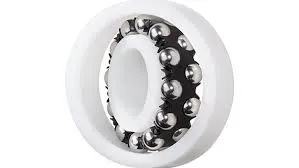
Dec . 18, 2024 16:50 Back to list
Designing Grooves in Ball Bearings for Enhanced Performance and Longevity
Understanding Groove for Ball Bearings A Critical Component in Engineering
Ball bearings play an integral role in the functionality of various mechanical systems, and at the heart of their design are the grooves that house the balls. These grooves are not just simple depressions; they are strategically engineered features that ensure optimal performance, reduce wear and tear, and enhance the longevity of the bearings. In this article, we will delve into the significance of grooves in ball bearings, their design considerations, and their impact on overall machinery performance.
The Role of Grooves in Ball Bearings
A ball bearing generally consists of an inner race, an outer race, and a set of spherical balls that facilitate rotational movement. The grooves serve dual purposes they provide a track for the balls to roll within and ensure that the load is distributed evenly across the bearing surface, minimizing stress concentration. This distribution is crucial, particularly in high-load applications where uneven wear can lead to rapid deterioration of components.
Design Considerations
The design of the grooves is pivotal to the functionality of ball bearings. Several key considerations come into play
1. Shape and Depth The shape and depth of the grooves must be precisely calculated. A deeper groove may offer more stability but can also increase friction. Conversely, a shallower groove may reduce friction but might not provide adequate support for the balls. The ideal design typically strikes a balance between minimizing friction and providing sufficient support.
2. Material Selection The materials used for both the grooves and the balls must be compatible. For instance, using steel balls with a softer groove material could lead to quicker wear and reduced performance. High-quality materials such as stainless steel or ceramic can enhance durability and minimize the likelihood of deformation.
3. Surface Finish The surface finish of the grooves significantly affects bearing performance. A smoother finish decreases friction and wear, leading to improved efficiency and longer service life. However, achieving the right finish can require advanced manufacturing techniques, such as precision grinding or polishing.
groove for ball bearings

4. Alignment and Tolerances Accurate alignment of the bearing races and grooves is critical. Misalignment can result in uneven loading and accelerated wear. Precision machining is essential to maintain the necessary tolerances and ensure that the balls remain securely seated within the grooves.
Impact on Performance
The design and execution of grooves in ball bearings directly influence the performance of machinery. High-quality grooves contribute to
- Reduced Friction Properly designed grooves facilitate smooth ball movement, leading to lower friction levels. This not only enhances efficiency but also reduces energy consumption, a crucial factor in both automotive and industrial applications.
- Load Distribution Effective groove design allows for even load distribution across the ball bearing, which is essential in preventing early failure. Bearings that experience uneven loading can develop premature fatigue, leading to costly downtimes and repairs.
- Vibration Damping In many applications, excessive vibrations can lead to catastrophic failures. Grooves that are well-designed can absorb some of these vibrations, enhancing the stability and reliability of the equipment.
- Thermal Management Enhanced designs may also aid in dissipating heat generated during operation. Excessive heat can cause premature wear and failure, making thermal management a key consideration in bearing design.
Conclusion
In summary, grooves in ball bearings are more than mere physical features; they are essential components that significantly influence performance, durability, and reliability in mechanical systems. The careful consideration of groove design—taking into account factors such as shape, material, surface finish, and alignment—can lead to substantial improvements in the lifespan and efficiency of bearings. As engineering continues to evolve, advancements in groove design and manufacturing techniques will likely lead to even greater innovations in ball bearing technology, cementing their role as vital elements in modern machinery. By understanding and optimizing these components, engineers can enhance both the performance and the reliability of the systems they design, ensuring their effectiveness in various industrial applications.
Latest news
-
Premium Deep Groove Ball Bearings | High Speed & Reliability
NewsAug.29,2025
-
Durable Scaffolding Clamps - Secure & Reliable Tube Connectors
NewsAug.28,2025
-
Common Failures in Thrust Ball Bearings and Solutions
NewsAug.22,2025
-
How Tapered Roller Bearings Can Take Shock Loads
NewsAug.22,2025
-
Angular Bearings in High-Precision Spindles
NewsAug.22,2025
-
The Impact of Misalignment on Cylindrical Roller Bearing Performance
NewsAug.22,2025
